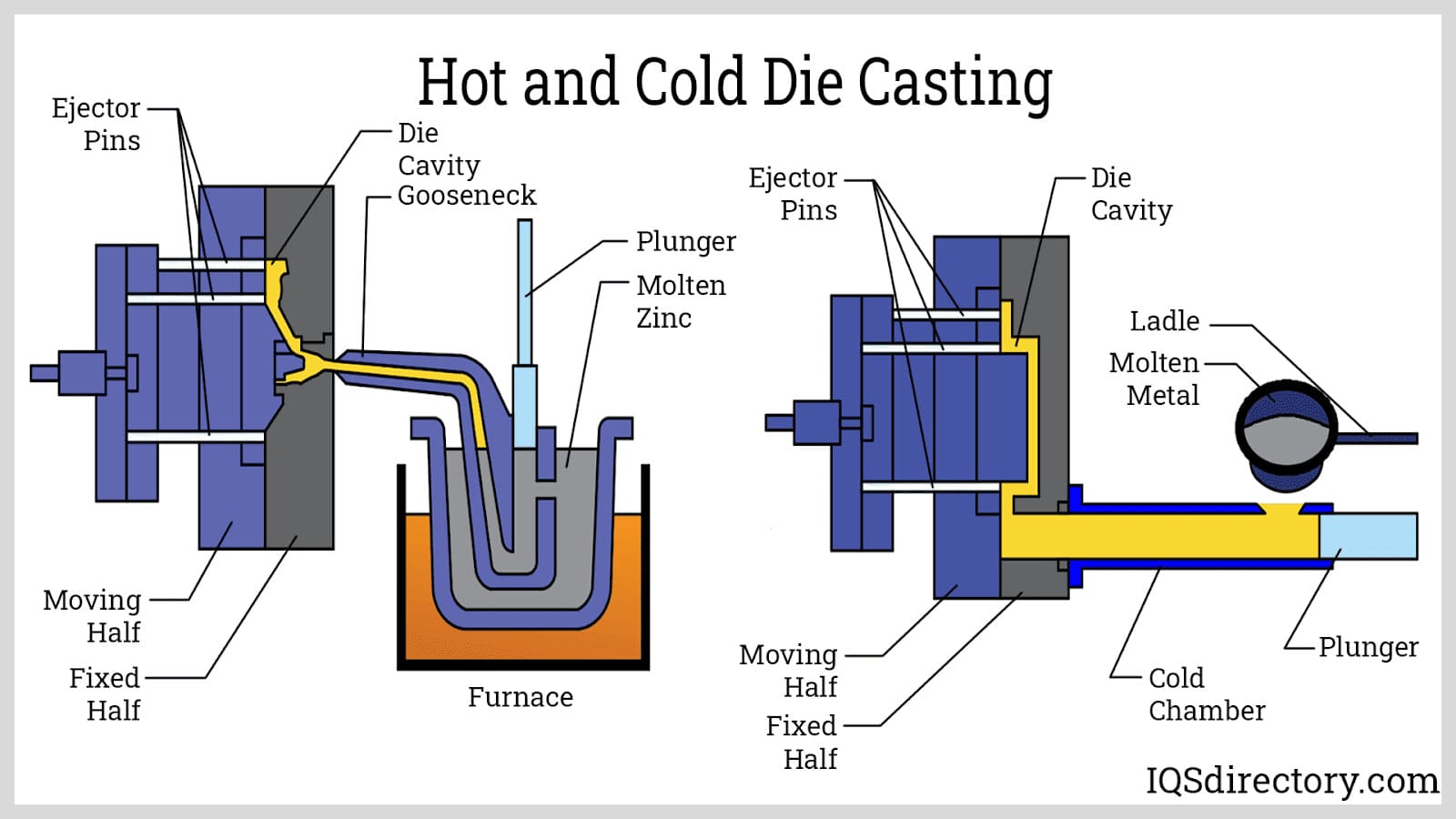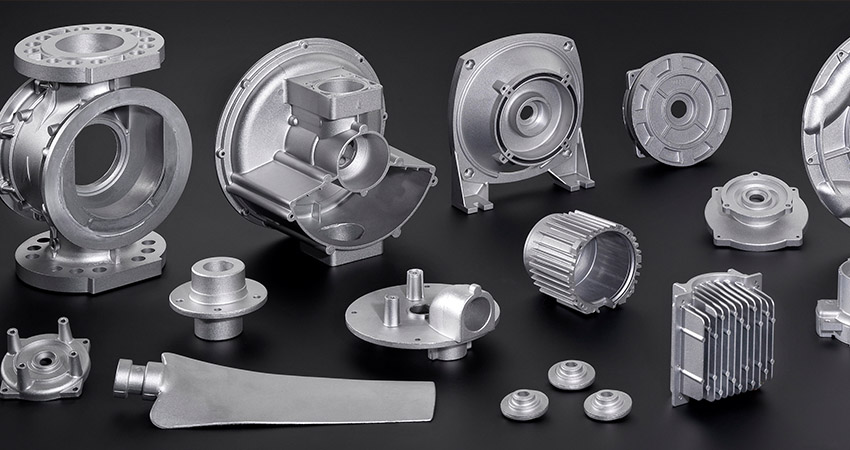A Deep Dive Into the Aluminum Casting Process: From Style to End Product
The light weight aluminum Casting process incorporates numerous critical points, each requiring precision and expertise. It starts with the style phase, where principles develop right into detailed requirements. The prep work of mold and mildews complies with, using numerous casting techniques. After melting and pouring, the cooling stage figures out the last residential properties of the light weight aluminum. The trip doesn't end there; completing processes play a significant duty in accomplishing quality criteria. What occurs next in this detailed procedure?
Recognizing Aluminum Spreading
Light weight aluminum Casting is an essential process in making that includes pouring liquified light weight aluminum right into a mold and mildew to create various shapes and components. This approach is preferred for its ability to create elaborate designs with excellent dimensional accuracy. The procedure begins with selecting top quality aluminum alloys, which are after that thawed at elevated temperatures. Once in a fluid state, the aluminum is carefully put into mold and mildews, which can be made from sand, steel, or other products, depending upon the wanted end product.
Air conditioning occurs as the molten aluminum strengthens, forming the wanted form. After cooling down, the castings are gotten rid of from the molds and undertake ending up processes such as machining or surface treatment to boost their buildings and appearance. Understanding aluminum Casting not only highlights its importance in design and manufacturing but likewise stresses its versatility in generating light-weight, durable elements for different industries, including auto, aerospace, and customer items.
The Style Process: From Concept to CAD
The layout process for aluminum Casting starts with preliminary idea growth, where ideas are changed right into tangible specs. Following this stage, CAD modeling methods are employed to develop specific electronic representations of the styles. This shift from concept to CAD is crucial for guaranteeing precision and usefulness in the Casting process.
Initial Idea Development
Initiating the style procedure for light weight aluminum Casting entails changing abstract ideas into concrete principles. This stage is essential, as it prepares for effective product growth. Developers work together with engineers and stakeholders to define the useful demands and visual aspects of the spreading. Conceptualizing sessions commonly produce multiple ideas, which are after that reviewed for usefulness, cost-effectiveness, and manufacturability. Illustrations and preliminary versions might be created to picture potential styles. Comments from employee and customers is important in refining these principles. Iterative discussions aid to recognize prospective difficulties, making sure that the final layout lines up with both technical requirements and user requirements. Eventually, this phase sets the phase for the shift from concept to more in-depth digital depictions.
CAD Modeling Techniques
As the design procedure shifts from initial ideas to comprehensive depictions, CAD modeling methods end up being necessary devices for designers and engineers. These methods enable the production of precise, scalable digital designs that precisely show the desired physical item. Common techniques include 3D solid modeling, surface modeling, and parametric layout, each offering distinct capabilities for different project requirements. Designers use software application like AutoCAD, SolidWorks, and CATIA to refine layouts, simulate efficiency, and determine possible problems before manufacturing. The assimilation of CAD with various other modern technologies, such as finite aspect analysis (FEA), enhances the style procedure even more by forecasting product habits under stress and anxiety. Eventually, effective CAD modeling streamlines communication amongst team participants and improves the general performance of the light weight aluminum Casting process.
Preparing the Mold: Sand, Die, and Investment Spreading
When preparing molds for light weight aluminum spreading, the selection of technique significantly affects the end product's quality and precision. 3 key methods are commonly utilized: sand spreading, die casting, and financial investment casting.
Sand Casting includes creating a mold and mildew from sand, which is functional and cost-effective, making it appropriate for big parts and intricate geometries. This method, however, may generate a rougher surface area coating contrasted to various other techniques.
Die casting utilizes steel mold and mildews, enabling high-volume production and outstanding dimensional accuracy. This method is suitable for creating intricate designs with limited tolerances and smooth surface areas yet requires greater in advance prices as a result of mold and mildew construction.
Investment spreading, also referred to as lost-wax casting, supplies phenomenal accuracy and surface area finish, making it appropriate for complex parts. This method entails developing a wax pattern, which is covered in ceramic, enabling great information throughout the Casting process. Each approach has its benefits, affecting the casting's attributes and applications.
Pouring and melting Light weight aluminum: Strategies and Equipment
In the aluminum Casting process, efficient melting and putting techniques are critical for attaining top quality results. Various melting approaches and specialized putting equipment play a considerable role in guaranteeing optimal fluidness and temperature level control - Aluminum Casting Manufacturer. Comprehending these fundamentals is crucial for both newbie and seasoned shop experts
Thawing Strategies Summary
A range of melting methods are employed in the light weight aluminum Casting process, each tailored to details applications and manufacturing ranges. Common techniques include crucible melting, where light weight aluminum is heated up in a ceramic or metal container, often ideal for tiny sets. Induction melting uses magnetic fields to heat light weight aluminum promptly and efficiently, perfect for larger production needs. Electric arc furnaces offer a high-temperature setting, making them ideal for recycling aluminum scrap. Furthermore, rotating furnaces offer a continuous melting procedure, enhancing productivity. Each method has its advantages, such as power effectiveness, thawing rate, and worldly quality, guaranteeing that producers can select one of the most ideal approach based upon their operational requirements and preferred outcomes in the Casting process.
Pouring Devices Essentials
Complying with the melting procedure, efficient putting tools plays a substantial role in assuring the successful transfer of liquified aluminum into molds. Secret components include ladles, pouring mugs, and automated pouring devices. Ladles, generally made of heat-resistant products, are created to hold and deliver molten aluminum securely. Putting mugs enhance control during the transfer, assisting in a stable pour to reduce turbulence and oxidation. Automated pouring machines are increasingly popular, guaranteeing consistent circulation prices and reducing human error. These machines can be programmed for precision, optimizing casting quality. In addition, temperature monitoring gadgets are vital to ensure the liquified aluminum stays within the optimal temperature array, additional improving the quality of the final actors item. Appropriate selection and upkeep of putting devices are vital for performance and safety and security.

Air conditioning and Solidification: Changing Liquid to Solid
Air conditioning and solidification play a crucial function in the aluminum Casting process, as they figure out the last residential or commercial properties of the cast steel. After putting, the liquified light weight aluminum begins to lose warm, changing from liquid to solid. This cooling phase is critical, as it affects mechanical homes such as strength, ductility, and microstructure. The rate of cooling can vary based on elements such as mold and mildew material, density, and ecological problems. Rapid air conditioning may result in a finer grain structure, boosting stamina, while slower air conditioning can bring about coarser additional info grains, affecting ductility.
In addition, consistent air conditioning is essential to stop problems such as bending or cracking. As the metal strengthens, the formation of dendrites happens, which are tree-like structures that influence the total stability of the spreading. Comprehending the cooling and solidification characteristics permits designers and foundry workers to maximize the process, making sure that the end product satisfies the needed specifications and top quality criteria.

Ending Up Processes: Machining, Coating, and Inspection
Finishing procedures are crucial in refining light weight aluminum spreadings to fulfill stringent specifications and improve efficiency. These processes typically consist of machining, finish, and inspection, each playing an important role in attaining the desired high quality.
Machining involves eliminating excess product from the Casting to obtain specific dimensions and surface area coatings. Techniques such as milling, transforming, and grinding are generally utilized to ensure that the final item satisfies design resistances.
Finish offers to safeguard the aluminum surface from environmental aspects, enhancing corrosion resistance and visual appeal. Choices consist Learn More Here of anodizing, powder finish, and paint, each offering distinctive advantages depending upon the application.
Assessment is important to validate that the finished spreadings fulfill top quality standards. Techniques such as aesthetic inspection, dimensional checks, and non-destructive screening are employed to identify any kind of problems. With each other, these completing processes assure that aluminum castings are dependable, resilient, and ready for their desired applications.
Applications of Light Weight Aluminum Castings in Different Industries

The customer products sector incorporates light weight aluminum castings in products like cookware and devices, capitalizing on their thermal conductivity and resilience. The construction sector utilizes aluminum castings in window frames, doors, and decorative aspects, enhancing visual appeals while keeping capability. In addition, the aquatic industry counts on light weight aluminum spreadings for watercraft components, where resistance to deep sea corrosion is important. On the whole, light weight aluminum castings give ingenious remedies across different applications, making them essential in modern-day manufacturing processes.
Frequently Asked Questions
What Are the Ecological Influences of Light Weight Aluminum Casting?
The ecological influences of light weight aluminum Casting consist of energy-intensive production, greenhouse gas exhausts, and prospective water contamination. Furthermore, mining bauxite for aluminum contributes to environment destruction, while reusing initiatives can minimize some adverse results.
Exactly How Does Light Weight Aluminum Casting Contrast to Other Metal Casting Processes?
Aluminum casting generally uses benefits like light-weight residential properties and deterioration resistance compared to various other steel Casting processes. It might have constraints in toughness and temperature resistance, making its suitability reliant on certain application needs.
What Security Preventative Measures Are Required During Aluminum Casting?
During light weight aluminum spreading, security preventative measures include putting on safety gear, ensuring proper air flow, keeping devices, and complying with strict protocols to take care of liquified metal. These steps intend to lessen risks such as burns, inhalation of fumes, and tools breakdowns.
Can Aluminum Castings Be Recycled After Usage?
Aluminum castings can certainly be recycled after usage. The recycling process preserves the product's homes, making it a sustainable option. This technique substantially decreases waste and saves energy, promoting ecological duty in producing markets.
What Prevail Problems in Aluminum Castings and Their Causes?
Common defects in aluminum castings include porosity, chilly shuts, and contraction - Aluminum Casting Manufacturer. These concerns usually develop from inadequate melting temperature levels, incorrect mold and mildew design, and not enough cooling rates, affecting the overall top quality and performance of the end product
Aluminum Casting is a critical process in producing that involves pouring liquified aluminum right into a mold and mildew to create different forms and elements. The layout process for light weight aluminum Casting begins with initial idea development, where ideas are changed into concrete specifications. Launching the layout process for light weight aluminum Casting entails changing abstract concepts right into substantial principles. In the aluminum Casting process, reliable melting and pouring strategies are essential for accomplishing top notch outcomes. A variety of melting strategies are used in the aluminum Casting i loved this process, each customized to certain applications and production scales.